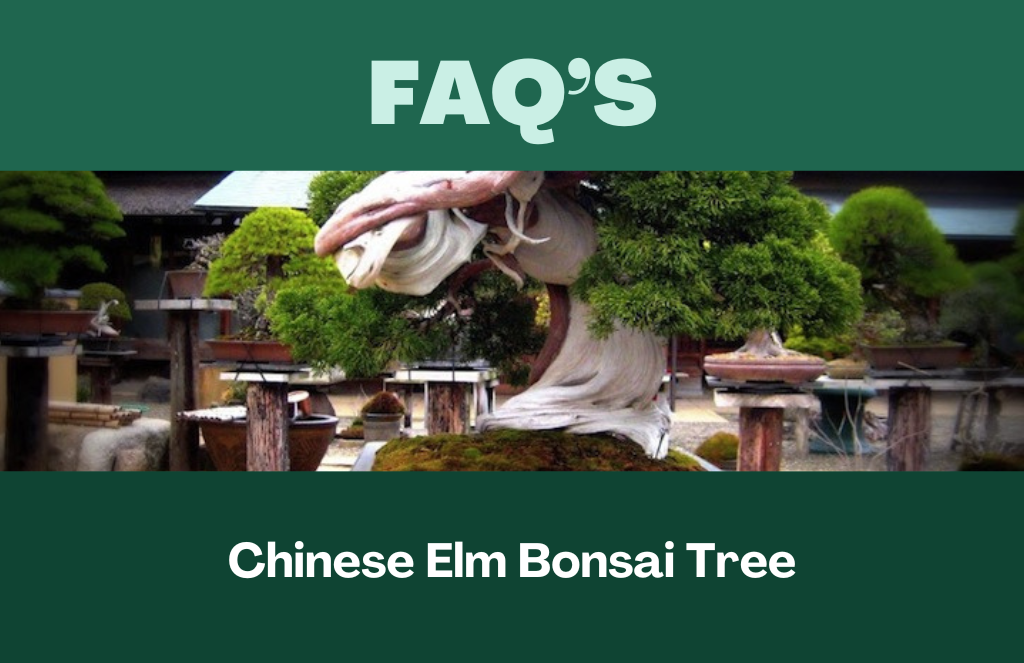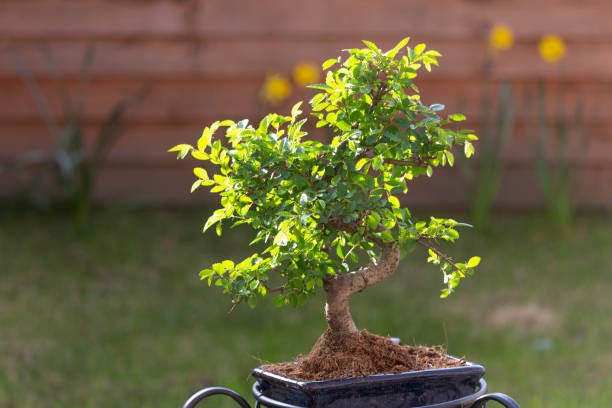How to Care for a Chinese Elm Bonsai Tree in Winter?
To care for a Chinese Elm Bonsai tree in winter, protect it from freezing temperatures and ensure it receives adequate sunlight. In colder climates, move the tree indoors or place it in a sheltered area. Provide additional heat if necessary, and avoid overwatering during this dormant period.
However, winter conditions can pose challenges to their survival, making it essential to follow specific guidelines for their care. This article outlines effective strategies to ensure the health and well-being of your Chinese Elm Bonsai tree during the colder months.
By implementing these techniques, you can protect your bonsai from the adverse effects of freezing temperatures and promote its vitality throughout the winter season.
Winter Requirements Of Chinese Elm Bonsai Trees
Understanding the winter requirements of Chinese Elm bonsai trees is crucial to ensure their health and vitality during the colder months. Proper care during this time is essential for the tree’s overall well-being and longevity.
Right Location For Winter Storage
During the winter months, it’s important to find the ideal location for storing your Chinese Elm bonsai tree. This location should offer protection from harsh elements such as freezing temperatures and strong winds.
Ideally, it should be a cool and well-ventilated spot, such as an unheated garage or a cold frame.
Avoid placing your bonsai tree near heat sources like radiators or heating vents, as excessive warmth can disrupt its dormancy.
Optimal Temperature Range
Chinese Elm bonsai trees have specific temperature requirements during winter. They need to experience a period of dormancy, but extreme cold can damage or even kill the tree.
The optimal temperature range for winter care is typically between 32°F (0°C) and 50°F (10°C). This range allows the tree to enter a dormant state without freezing.
To ensure your bonsai’s well-being, use a thermometer to monitor the temperature in the storage location regularly.
Adequate Sunlight During The Winter Months
While the days are shorter and the sun’s intensity is reduced during winter, it’s still crucial to provide your Chinese Elm bonsai tree with adequate sunlight.
Place it near a window where it can receive indirect sunlight for at least a few hours each day. Natural light is essential for the tree’s overall health, as it helps stimulate metabolic processes and promotes balanced growth.
How To Prepare Chinese Elm Bonsai Trees For Winter?
As the chilly winter months approach, it’s essential to take extra care of your Chinese Elm Bonsai tree. Without proper preparation, these delicate trees can suffer from cold damage and stress.
By following a few simple steps, you can ensure that your bonsai survives the winter and thrives when spring arrives.
Pruning And Shaping
Before the onset of winter, it’s crucial to give your Chinese Elm Bonsai tree a proper pruning and shaping. This process not only helps maintain the desired aesthetics but also prevents the tree from becoming overcrowded and promotes healthy growth in the upcoming season.
Begin by inspecting the branches for any dead, damaged, or crossing limbs. Using clean and sharp pruning shears, carefully remove these unwanted branches, making clean cuts just above the branch collar (the swollen area where the branch connects to the trunk).
Once any necessary pruning is complete, you can begin shaping your bonsai tree. Keep in mind the desired style and aesthetics of your tree as you carefully trim the branches.
Some common shaping techniques for Chinese Elm Bonsai trees include the formal upright style, slanting style, and cascade style.
Removing Weeds And Debris
Over time, weeds, debris, and fallen leaves can accumulate in the pot of your Chinese Elm Bonsai tree. These unwanted elements not only create a messy appearance but also potentially harbor pests and diseases.
Therefore, it’s important to regularly clean and remove these from the bonsai’s pot, especially before the winter season.
To clean the pot, gently lift the tree out of the container and clear away any debris or weeds. Ensure that the roots are not disturbed during this process.
Once the pot is clean, place a layer of fresh soil on the bottom before carefully placing the bonsai back into its pot. This will provide the tree with fresh nutrients and help it thrive during the winter months.
Inspecting The Tree For Pests Or Diseases
During the winter season, some pests and diseases can still pose a threat to your Chinese Elm Bonsai tree. Therefore, it’s essential to thoroughly inspect the tree for any signs of infestation or infection before winter arrives.
Check the leaves, branches, and trunk carefully, looking for any abnormal discoloration, spots, or damage caused by pests. If you notice any signs of pest activity or disease, take immediate action to treat the issue.
This may involve using appropriate insecticides, fungicides, or other remedies, depending on the specific problem.
By proactively pruning and shaping your tree, keeping the pot clean, and inspecting for pests or diseases, you can ensure that your Chinese Elm Bonsai tree stays healthy and strong throughout the winter season.
How To Protect Chinese Elm Bonsai Trees From Cold Temperatures?
As winter arrives, it becomes crucial to take proper care of your Chinese Elm bonsai tree to ensure its survival and health. Cold temperatures can be harsh on these delicate trees, and without adequate protection, they may suffer damage or even die.
To safeguard your Chinese Elm bonsai from winter’s chill, here are three effective methods:
Insulation Materials
One of the main concerns during winter is protecting the delicate roots of your Chinese Elm bonsai from freezing. Insulating the roots helps maintain stable temperatures, preventing potential damage.
For this purpose, you can use insulation materials such as mulch or straw. These materials provide an extra layer of protection against extreme cold.
Creating A Windbreak
Strong winds can further worsen the impact of cold temperatures on your Chinese Elm bonsai tree. To minimize the exposure to harsh winds, it is essential to create a windbreak. You can use materials like wooden panels or garden fabric to erect a barrier around your bonsai.
This barrier will act as a shield, reducing the wind’s destructive force and keeping your bonsai safe during winter.
Wrapping The Bonsai In Burlap Or Frost Cloth
An effective method to safeguard your Chinese Elm bonsai from freezing temperatures is to wrap it in burlap or frost cloth. This protective layer provides insulation while allowing air circulation and sunlight penetration. Wrap the entire tree carefully, ensuring that the branches, leaves, and root ball are adequately covered. Secure the wrapping with string or clips to keep it in place.
Taking these protective measures will significantly increase the chances of your Chinese Elm bonsai’s survival during the cold winter months. Remember to remove the insulation, windbreak, and wrapping gradually as temperatures rise in the spring to allow the tree to acclimate properly to the changing environment.
How Do You Provide Proper Watering And Humidity In Winter?
When it comes to caring for your Chinese Elm Bonsai Tree during the winter months, ensuring proper watering and humidity levels is crucial. As temperatures drop and indoor heating systems are turned on, it’s important to adjust your watering routine to accommodate the changing conditions.
Here are some tips to help you provide the right amount of water and humidity for your Bonsai Tree during winter:
Watering Schedule
During winter, the growth of your Chinese Elm Bonsai Tree slows down, and its water requirements decrease. It’s essential to adjust your watering schedule accordingly to prevent overwatering and avoid root rot. Here are some guidelines to keep in mind:
Water your Bonsai Tree only when the top layer of soil feels slightly dry to the touch. Stick your finger into the soil about an inch to check the moisture level.
Avoid watering on a fixed schedule and instead observe the tree’s needs closely. Factors such as humidity levels, indoor temperatures, and sunlight exposure can all affect how quickly the soil dries out.
Ensure proper drainage by using well-draining soil and a pot with drainage holes. This prevents water from accumulating at the bottom, which can lead to waterlogged roots.
Using Humidity Trays Or Misting
Indoor environments tend to be drier during the winter due to heating systems. To provide adequate humidity for your Chinese Elm Bonsai Tree, you can employ the following methods:
- Place your Bonsai Tree on a humidity tray filled with water. The tray can be filled with pebbles or gravel to elevate the tree and prevent it from sitting directly in the water.
- Misting the foliage with water can also help increase humidity levels around the tree. However, make sure not to overdo it as excessive moisture on the leaves can promote fungal diseases.
- Keep your Bonsai Tree away from drafts, direct heat sources, and excessive air movement as these conditions can further dry out the foliage and soil.
Signs Of Overwatering Or Underwatering In Bonsai Trees
It’s essential to be able to recognize the signs of overwatering or underwatering in your Chinese Elm Bonsai Tree. Here are some indicators to help you identify if your tree is not receiving the proper amount of water:
| Overwatering Signs | Underwatering Signs |
| Yellowing or browning leaves that are soft and mushy when touched | Wilting, dry, and crispy leaves |
| Foul, musty smell coming from the soil | Leaves dropping off prematurely |
| Excessive moss or algae growth on the soil surface | Soil pulling away from the edges of the pot |
By monitoring your Chinese Elm Bonsai Tree closely and adjusting your watering and humidity routine accordingly, you can ensure its health and vitality throughout the winter season.
Frequently Asked Question

How Often Should I Water My Chinese Elm Bonsai Tree In Winter?
In winter, it’s important to water your Chinese Elm Bonsai tree less frequently to avoid overwatering. Check the soil moisture by inserting a finger into the soil about an inch deep. Only water when the soil feels slightly dry to the touch.
Should I Fertilize My Chinese Elm Bonsai Tree In Winter?
No, you should not fertilize your Chinese Elm Bonsai tree in winter. The tree is in its dormant period and does not require the extra nutrients. Wait until spring when the bonsai tree begins actively growing again to resume fertilizing.
How Do I Protect My Chinese Elm Bonsai Tree From Frost In Winter?
To protect your Chinese Elm Bonsai tree from frost during winter, you can move it to a sheltered location such as a garage or greenhouse. If that’s not possible, cover the tree with frost cloth or blankets overnight to provide insulation from extremely cold temperatures.
Can I Prune My Chinese Elm Bonsai Tree In Winter?
It is best to avoid pruning your Chinese Elm Bonsai tree in winter. During this period, the tree is dormant, and pruning can cause stress and potentially damage the tree. Wait until spring when the tree is actively growing to prune and shape it.
Conclusion
Caring for a Chinese Elm Bonsai Tree in winter is crucial to ensure its health and survival. By following the right techniques, such as providing adequate insulation and protection from freezing temperatures, avoiding overwatering, and monitoring sunlight exposure, you can keep your bonsai thriving throughout the cold season.
Remember to adjust your care routine based on your climate and the specific needs of your tree. Embrace these practices and watch your Chinese Elm Bonsai Tree flourish all year round.

